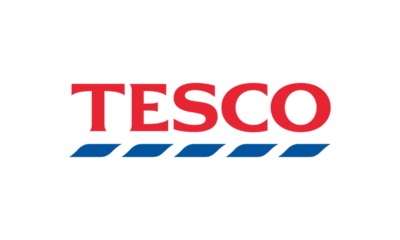Business
Supermarkets Shift Cloudy Lemonade Options as Tesco Withdraws Classic

As summer approaches, the demand for refreshing beverages rises, particularly for traditional cloudy lemonade. However, customers at Tesco are facing a challenge following the removal of their beloved classic cloudy lemonade from the shelves. This decision has left many shoppers searching for alternative options in the supermarket’s soft drinks range.
Laura Stott has conducted a taste test of various supermarket alternatives, rating each one based on flavor and overall satisfaction. Below are her findings on some notable cloudy lemonade substitutes available across different retailers.
Evaluating Alternatives to Traditional Cloudy Lemonade
Tesco’s Diet Lemonade with Lemon Juice (330ml, £0.55) is one of the first substitutes Stott sampled. With only 2 percent lemon juice, this version lacks the rich flavor associated with traditional cloudy lemonade. While it is described as having a sherbet-like taste, the overall experience is disappointing, lacking the vibrant color and zing of its predecessor. Stott rated this option a mere 2 out of 5, calling it an “unsatisfying substitute.”
In contrast, the Cloudy Lemonade from M&S (750ml, £3.50) stands out for those looking to indulge. Made from 4 percent Sicilian lemon juice and an additional 4 percent puree, this drink offers a luxurious taste experience. Stott highlighted its perfect balance between sweetness and sharpness, making it an excellent mixer for summer cocktails. Although it is on the pricier side, she rated it 3 out of 5, deeming it a worthwhile treat for summer gatherings.
Next, Stott assessed Aldi’s Vive Lemon Zero Sugar (2 litres, £0.85). While affordable, this option contains only 3 percent lemon juice from concentrate, which contributes to a flavor closer to mainstream fizzy lemon drinks rather than a traditional cloudy lemonade. Stott found it overly sweet for her taste and rated it 2 out of 5.
Popular Choices Among Shoppers
The Cloudy Lemonade from Sainsbury’s (6 x 330ml cans, £2.05) offers a convenient option for those who prefer individual servings. Stott noted that while the price may be higher at checkout, the cost per can remains reasonable. The bright citrus flavor refreshes the palate, earning a commendable rating of 4 out of 5. However, the lack of a “cloudy” appearance when consumed directly from the can may disappoint some traditionalists.
From Co-op, the Diet Cloudy Lemonade (2 litres, £0.90) impressed with its vibrant color and a blend of lemon juices that strike a balance between tart and sweet. Stott appreciated its softer carbonation, making it easy to sip. She rated it 5 out of 5, labeling it “delicious” and ideal for hot summer days.
Moving on to Morrisons, their Cloudy Lemonade (2 litres, £0.80) features a delightful cloudy hue and is made with 4 percent concentrated lemon. Stott found it refreshing and noted the strong citrus flavor, despite a slightly artificial aftertaste due to the use of sucralose. This option received a solid rating of 4 out of 5.
Finally, Stott reviewed Asda’s Diet Cloudy Lemonade (2 litres, £0.82). This beverage boasts a pale yellow-green color and a tangy flavor profile. With 4 percent concentrated juice, it provides a refreshing taste that works well as a mixer for alcoholic beverages. Stott rated it 4 out of 5, appreciating its value and flavor.
In summary, while Tesco’s withdrawal of traditional cloudy lemonade has left a gap in the market, several supermarkets offer viable alternatives. From the luxurious M&S version to the refreshing Co-op option, shoppers have choices to suit their taste preferences and budgets. As summer approaches, these drinks may become staples for those seeking a refreshing beverage on warm days.
-

 Entertainment2 months ago
Entertainment2 months agoAnn Ming Reflects on ITV’s ‘I Fought the Law’ Drama
-

 Entertainment3 months ago
Entertainment3 months agoKate Garraway Sells £2 Million Home Amid Financial Struggles
-

 Health2 months ago
Health2 months agoKatie Price Faces New Health Concerns After Cancer Symptoms Resurface
-

 Entertainment2 months ago
Entertainment2 months agoCoronation Street’s Carl Webster Faces Trouble with New Affairs
-

 Entertainment2 months ago
Entertainment2 months agoWhere is Tinder Swindler Simon Leviev? Latest Updates Revealed
-

 Entertainment3 months ago
Entertainment3 months agoKim Cattrall Posts Cryptic Message After HBO’s Sequel Cancellation
-

 Entertainment2 months ago
Entertainment2 months agoOlivia Attwood Opens Up About Fallout with Former Best Friend
-

 Entertainment2 months ago
Entertainment2 months agoMasterChef Faces Turmoil as Tom Kerridge Withdraws from Hosting Role
-

 Entertainment3 months ago
Entertainment3 months agoMarkiplier Addresses AI Controversy During Livestream Response
-

 Entertainment4 months ago
Entertainment4 months agoSpeculation Surrounds Home and Away as Cast Departures Mount
-

 World2 months ago
World2 months agoCole Palmer’s Mysterious Message to Kobbie Mainoo Sparks Speculation
-

 Entertainment2 months ago
Entertainment2 months agoITV’s I Fought the Law: Unraveling the True Story Behind the Drama





















